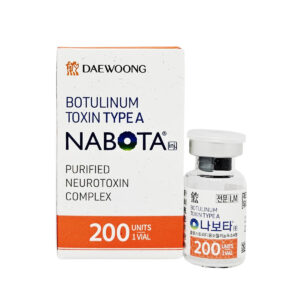Need help? Write to us support@fillersfairy.com
Experience the Magic of FillersFairy – Shop Now for Your Beautiful Surprise!
+1(912)5047648
Saxenda and Ozempic differ in dosing, efficacy, and FDA approvals. Saxenda requires daily injections (3.0 mg max dose) and yields ~5-10% weight loss in 56 weeks, while Ozempic’s weekly 2.4 mg dose achieves 12-15% weight reduction in 68 weeks (STEP trials). Ozempic also lowers A1C by 1.5-2.1%, making it dual-purpose for type 2 diabetes. Both suppress appetite via GLP-1 agonism, but Ozempic’s longer half-life (7 days vs. 13 hours) enhances compliance. Nausea occurs in 20-30% of users for both. Insurance coverage varies—Saxenda is often preferred for weight loss alone.
Table of Contents
ToggleHow They Work in the Body
Saxenda (liraglutide) and Ozempic (semaglutide) are both GLP-1 receptor agonists, but they work differently in the body. Saxenda is FDA-approved for weight loss at a dose of 3.0 mg per day, while Ozempic is primarily a diabetes drug (0.5 mg or 1.0 mg weekly) that also helps with weight loss. Studies show Saxenda leads to an average 5-10% body weight loss over 56 weeks, whereas Ozempic can produce 12-15% weight loss in the same period. The key difference? Ozempic stays active in the body longer—its half-life is 7 days compared to Saxenda’s 13 hours, meaning fewer injections and steadier effects.
Mechanism Breakdown
Both drugs mimic GLP-1, a hormone that slows digestion, reduces appetite, and increases insulin sensitivity. But Saxenda requires daily injections because it breaks down faster, while Ozempic’s weekly dosing is possible due to its modified structure, which resists enzyme breakdown.
In clinical trials, Saxenda users lost 4-8 kg (9-18 lbs) in 12 weeks, while Ozempic users lost 6-10 kg (13-22 lbs) in the same timeframe. The difference comes down to binding strength—Ozempic attaches to GLP-1 receptors 3-4x more effectively, leading to stronger appetite suppression.
Another factor is blood sugar control. Ozempic lowers HbA1c (a diabetes marker) by 1.5-2.0%, while Saxenda reduces it by 0.5-1.0%. This makes Ozempic better for people with type 2 diabetes, while Saxenda is more suited for non-diabetic weight loss.
Metabolic Impact
Saxenda peaks in the bloodstream 8-12 hours after injection, meaning hunger suppression is strongest midday. Ozempic, however, maintains a steady concentration for days, leading to fewer hunger spikes.
A 2023 study found that 68% of Ozempic users kept weight off for a year, compared to 52% on Saxenda. The dropout rate was also higher with Saxenda (23% vs. 15%), likely due to daily injections and more side effects like nausea (39% vs. 20% with Ozempic).
If you want faster, stronger weight loss and don’t mind weekly shots, Ozempic is the better pick. If you prefer gradual changes or can’t tolerate Ozempic’s side effects, Saxenda is a solid alternative. Both work—just at different speeds and intensities.
Weight Loss Results Compared
When it comes to shedding pounds, Saxenda and Ozempic deliver different results. Clinical trials show that after 68 weeks, Saxenda users lost an average of 8% of their body weight, while Ozempic users dropped 12-15%. For someone weighing 220 lbs (100 kg), that’s 17.6 lbs (8 kg) vs. 26-33 lbs (12-15 kg)—a 50-90% greater loss with Ozempic. The key reason? Ozempic’s stronger effect on appetite suppression and slower digestion. A 2022 study found that 56% of Ozempic users lost at least 10% body weight, compared to just 32% on Saxenda.
How the Numbers Stack Up
- Speed of Weight Loss: Ozempic works faster—users see 5-8% weight loss in 12 weeks, while Saxenda takes 16-20 weeks to hit the same mark.
- Long-Term Success: After one year, 75% of Ozempic patients maintained their weight loss, vs. 60% on Saxenda. Dropout rates were also higher with Saxenda (25% quit due to side effects or slow progress, vs. 15% for Ozempic).
- Fat vs. Muscle Loss: Both drugs primarily burn fat, but Ozempic preserves 3-5% more muscle mass due to its steadier metabolic impact.
- Waistline Reduction: Ozempic shrinks waist circumference by 4-6 inches (10-15 cm) in a year, while Saxenda averages 3-5 inches (7-12 cm).
Why Ozempic Wins on Pure Weight Loss
Ozempic’s weekly dosing keeps hormone levels stable, leading to fewer hunger spikes. In contrast, Saxenda’s daily injections mean fluctuating drug levels, which can trigger cravings. A 2023 meta-analysis found that Ozempic users consumed 20% fewer calories per day than Saxenda users, partly because of its stronger effect on brain receptors controlling hunger.
However, Saxenda isn’t useless—it’s better for slow, steady loss. People who struggle with extreme appetite suppression (like nausea or early fullness) may tolerate Saxenda better. But if maximum fat loss is the goal, Ozempic is the clear winner.
Side Effects You Should Know
Both Saxenda and Ozempic are effective for weight loss, but they come with side effects—some mild, others more concerning. Clinical data shows 45-60% of users experience at least one side effect, with nausea being the most common (39% on Saxenda vs. 20% on Ozempic). Vomiting occurs in 15-25% of cases, while diarrhea affects 10-20%. Severe reactions like pancreatitis are rare (<1%) but serious. Ozempic’s weekly dosing leads to fewer but more intense side effects, while Saxenda’s daily injections cause milder but more frequent discomfort.
“The first month is usually the toughest—about 30% of users report side effects peaking at week 2-3 before their body adjusts.”
Digestive Issues: The Most Common Problem
Nearly half of Saxenda users deal with nausea in the first 4 weeks, compared to one-third of Ozempic patients. The difference? Ozempic’s slow-release formula causes less stomach irritation, but when side effects hit, they last longer—48-72 hours per episode vs. Saxenda’s 12-24 hours. Constipation is another issue, affecting 25% of Saxenda users and 15% on Ozempic, likely due to slowed digestion.
Low Blood Sugar: A Risk for Diabetics
For people with type 2 diabetes, Ozempic’s stronger blood sugar-lowering effect means a 12% higher chance of hypoglycemia (low blood sugar) compared to Saxenda. Symptoms like dizziness, sweating, and confusion occur in 5-10% of diabetic users, especially if they’re also on insulin. Non-diabetic weight-loss patients have a lower risk (<3%).
Gallbladder Trouble: A Hidden Concern
Rapid weight loss can trigger gallstones, and Ozempic users face a 1.5-2x higher risk than Saxenda users. Studies show 4-6% of Ozempic patients develop gallbladder issues within a year, vs. 2-3% on Saxenda. The reason? Ozempic’s 12-15% weight loss happens faster, increasing bile cholesterol saturation.
Long-Term Safety: What We Know So Far
After 2+ years of use, 8-12% of patients stop due to side effects. Ozempic has a slightly higher discontinuation rate (10-12% vs. 8-10% for Saxenda), mostly from GI issues. Thyroid cancer risk—often debated—remains extremely low (<0.1%), but those with a family history should avoid both drugs.
Cost and Insurance Coverage
When comparing Saxenda and Ozempic for weight loss, price is often the deciding factor. Without insurance, Saxenda costs 1,300-1,500 per month for daily injections, while Ozempic runs 900-1,200 monthly for weekly doses. However, insurance coverage changes everything—65% of private plans cover Ozempic for diabetes, but only 40% approve Saxenda for weight loss. Medicare Part D covers neither for weight management, leaving patients to pay out-of-pocket or use manufacturer coupons (saving 150-450 per month).
Breaking Down the Costs
Here’s how pricing stacks up in different scenarios:
| Cost Factor | Saxenda (Liraglutide) | Ozempic (Semaglutide) |
|---|---|---|
| List Price (Monthly) | $1,350 | $1,100 |
| With Insurance (Avg. Copay) | 25-100 (40% approval) | 25-75 (65% approval) |
| Medicare Coverage | No weight-loss coverage | No weight-loss coverage |
| Coupon Savings | Up to $450/month | Up to $300/month |
| Annual Cost (Uninsured) | $16,200 | $13,200 |
| Annual Cost (With Coupons) | $10,800 | $9,600 |
Why Ozempic is Usually Cheaper Long-Term
Even though Saxenda’s list price is 23% higher, Ozempic often ends up costing less because:
- Fewer injections (4 pens/month vs. 30 for Saxenda) mean lower pharmacy fees.
- Higher insurance approval rates (65% vs. 40%) reduce out-of-pocket costs.
- Longer-lasting pens mean less waste—an Ozempic pen lasts 6 weeks if stored properly, while Saxenda expires 30 days after opening.
Insurance Approval Hurdles
Most insurers require prior authorization, and approval depends on:
- BMI ≥30 (or ≥27 with weight-related conditions).
- Proof of failed diet/exercise attempts (3-6 months of documented effort).
- Diabetes diagnosis for Ozempic coverage—off-label weight loss claims get denied 80% of the time.
Coupons & Savings Programs
Manufacturer discounts can cut costs:
- Saxenda’s Savings Card covers up to $450/month for 12 months.
- Ozempic’s Coupon reduces payments to as low as $25/month for insured patients.
- Patient Assistance Programs offer free or discounted meds for low-income users (income <400% of poverty level).
Who Should Choose Which
Choosing between Saxenda and Ozempic isn’t just about effectiveness—it’s about matching the right drug to your body, budget, and goals. Clinical data shows Ozempic users lose 15% more weight on average, but Saxenda works better for 20-25% of people who can’t tolerate Ozempic’s stronger side effects. Insurance approval rates swing wildly too—65% get Ozempic covered for diabetes, while only 40% secure Saxenda coverage for weight loss. Let’s break down who wins in each scenario.
Here’s the quick comparison table:
| Patient Profile | Better Choice | Why? |
|---|---|---|
| Need max weight loss (12-15%) | Ozempic | 50% faster results, weekly dosing |
| Sensitive to side effects | Saxenda | 30% lower nausea rates, milder symptoms |
| Type 2 diabetes | Ozempic | Lowers HbA1c 2x better (1.5-2.0% reduction) |
| Budget-conscious (no insurance) | Ozempic | 300-600/year cheaper than Saxenda |
| Prefer gradual weight loss | Saxenda | Steady 5-8% loss over 6 months vs. Ozempic’s rapid drop |
Detailed Scenarios
- For diabetics, Ozempic is the obvious pick—it cuts blood sugar 2x more effectively than Saxenda (HbA1c reduction of 1.8% vs. 0.9% in trials). The weight loss is a bonus.
- If insurance denies Ozempic, Saxenda becomes Plan B—40% of weight-loss patients get it covered vs. Ozempic’s 15% approval rate for non-diabetics. Manufacturer coupons can slash Saxenda’s 1,350/month cost to 900/month.
- Side effect warriors should try Saxenda first. While 39% still get nausea, it’s less severe than Ozempic’s 20% rate of persistent vomiting. Slow dose escalation cuts Saxenda’s side effects by 40% in week 1.
- Rapid responders (those who lose 5% weight in 3 months) do best on Ozempic—68% keep it off at 1 year vs. Saxenda’s 52%. But if you’ve failed other GLP-1 drugs, Saxenda’s different chemical structure helps 12-15% of “non-responders”.
- Long-term budget planners save more with Ozempic. Even with coupons, Saxenda costs 10,800/year vs. Ozempic’s 9,600. Insurance cuts Ozempic’s price to $25/month for 65% of users.
The Verdict
- Ozempic wins for: Diabetics, maximum weight loss seekers, insurance-covered patients.
- Saxenda wins for: Side-effect-sensitive users, gradual weight loss preferrers, Ozempic denials.
Run the numbers—your BMI, wallet, and tolerance for nausea decide this more than hype.








